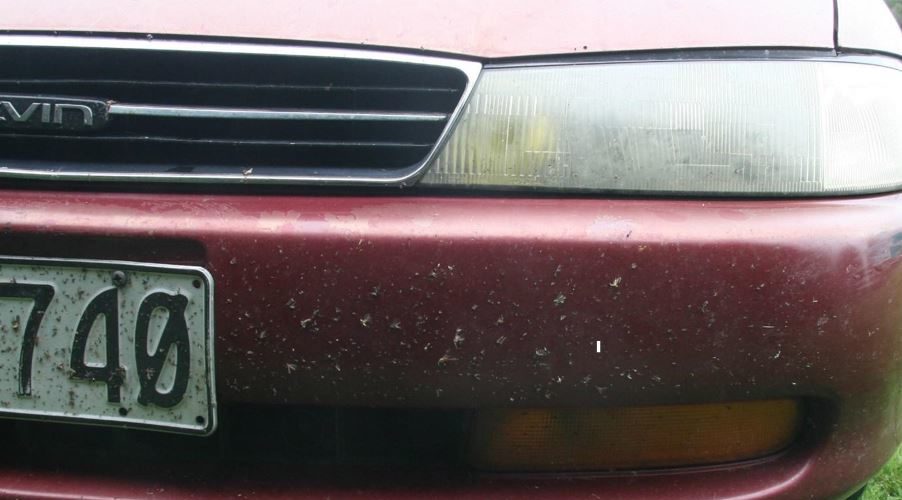The truth about the windscreen phenomenon

Like COVID-19, a meme about insects and windscreens has been circulating in my friendship groups. The meme describes the “windscreen phenomenon”: the observation that fewer insects are being splattered on car windscreens than they used to be.
As soon as I read it, I thought it made sense—the biodiversity crisis has led to approximately a million species threatened with extinction worldwide[1]. But are insects splattered on windscreens a good measure of biodiversity?
Bug splatter is more a measure of abundance, rather than diversity. Diversity takes into account the number of species involved, which is tricky to work out when they are congealed dry goop on your car. Noticing that you splatter fewer insects than you used to is an example of anecdotal evidence: a single anecdote, probably affected by personal biases, with no actual data supporting it.
If you mention your observation to a friend and they agree with you, that doesn’t mean much either. Their anecdotal evidence is even shakier as it is probably influenced by your statement. For your observations to count, you would need to drive the same car at the same time on the same days each year, quantify the bug splatter after each drive, and account for possible influencing factors such as temperature, speed, location, rain, and wind.
Alternatively, you could pick two areas of the road with the same speed limit, and drive cars through those areas, collecting over a thousand samples over two decades and comparing them with other methods of insect collection in the same area within the same time period. Within those samples, you would still have to account for environmental factors and the difference in car type.
Fortunately, you, personally, don’t have to – it’s been done. Anders Møller published his results in 2019[2]. He found that insect numbers splattered on cars declined by more than 80% between 1997 and 2017 when changes in weather and car type were taken into consideration. The decline in windscreen splats was corroborated by data collected using more traditional techniques (e.g., sweep netting and sticky traps). Concerningly, the decline in insect splats was correlated with a decline in bird abundance, indicating knock-on effects in the ecosystem.
Another study found that roads with more traffic have a lower insect abundance than roads with more traffic[3]. Other factors affecting insect numbers on a particular stretch of road include the habitat available on the roadside, and the proximity of vegetation to the road.
So, the “windscreen phenomenon” is real. Insects on windscreens are dropping in number, reflecting worrying abundance trends. But while you may notice less bug goo on your windscreen these days, it may be your driving habits or the roads you drive along have changed, rather than a reflection of real biological trends.
[1] https://www.un.org/sustainabledevelopment/blog/2019/05/nature-decline-unprecedented-report/
[2] https://onlinelibrary.wiley.com/doi/full/10.1002/ece3.5236
[3] https://resjournals.onlinelibrary.wiley.com/doi/10.1111/icad.12300
Edited by Liam Butler
Copy-edited by Claire Thomson








Says nothing
Research classic
Isn’t it the transport fuel mixture killing the insects
We don’t even have frogs, in the south (London) and birds can’t feed their young.
Fortunately we can all get a mobile phone signal on major roads to report this and upload photos of our windscreens. Ask any beekeeper what happens when mobile phones, routers etc. are placed near their hives. Don’t insects and birds use the earth’s magnetic field to navigate? Or am I just another conspiracy theorist?